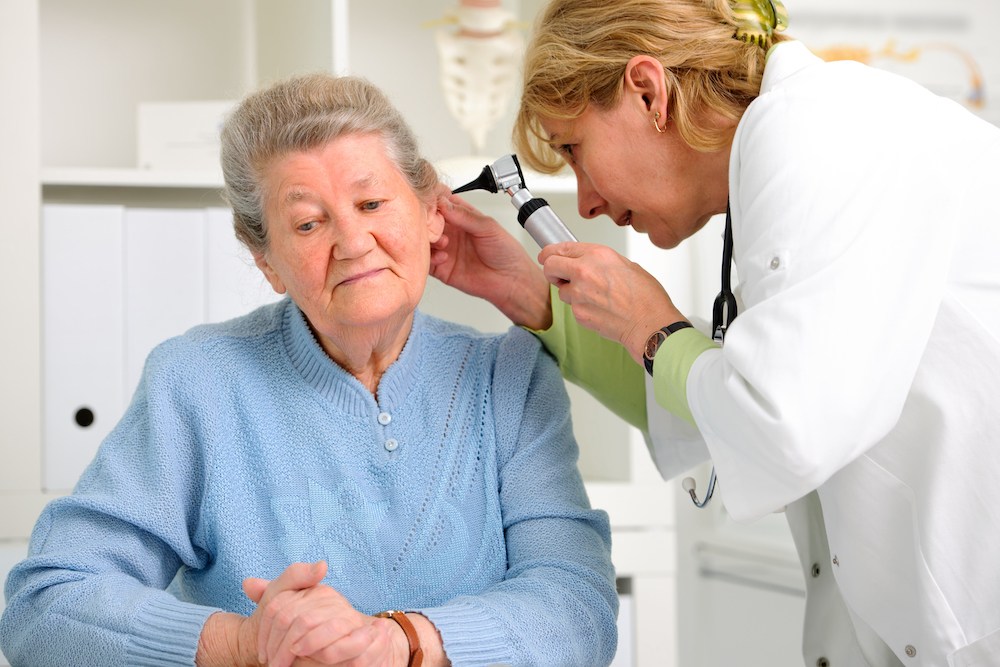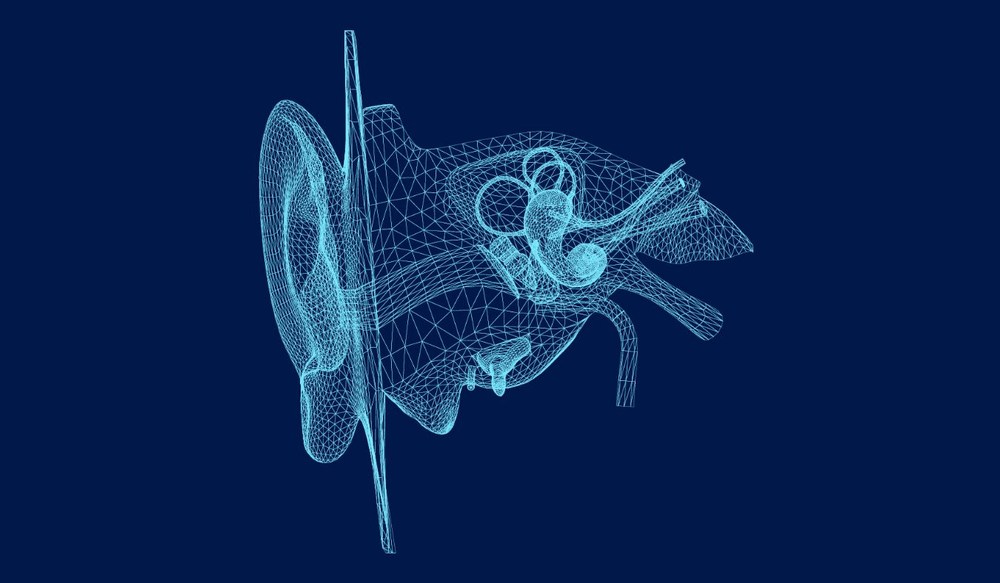The Connection Between Hearing Loss and Physical Activity
Staying physically active supports your overall health in ways that go far

By: admin | October 20, 2025
Staying physically active supports your overall health in ways that go far beyond fitness, including your balance, coordination and ability to stay socially connected. Regular movement helps you maintain strength and stability, which become increasingly important as we age. What many people don’t realize is hearing loss can quietly affect your willingness and ability to participate in physical activities. You might find yourself avoiding group exercise classes because it’s hard to hear instructions, skipping walks with friends because conversation feels difficult, or feeling less steady on your feet because your hearing isn’t providing the spatial cues your body relies on for balance.
Understanding this connection means you can take practical steps to keep moving and stay engaged in the activities that support your physical and social well-being. When you address hearing concerns early, you’re better equipped to participate fully in exercise routines, group activities and outdoor movement without the frustration or safety risks that untreated hearing loss can create. Recognizing how hearing and physical activity work together helps you make informed choices that protect both.
Physical activity can influence your risk of hearing loss in several ways. Regular exercise supports cardiovascular health, helping blood flow efficiently throughout the body, including the ears. Healthy circulation helps the auditory system work more effectively, while a sedentary lifestyle or conditions linked to poor circulation, such as high blood pressure or diabetes, may increase the likelihood of hearing changes over time.
Staying active can also help manage other health factors that affect hearing. Exercise supports weight management, reduces stress and improves overall metabolic function, all of which can have indirect benefits for hearing. Maintaining a consistent routine of movement, even light activities like walking or stretching, may lower the long-term risk of hearing decline and support overall auditory health.
Your body and ears are closely connected, and overall health has a direct impact on how well your hearing functions. The structures inside your ears rely on a steady supply of oxygen and nutrients, which are delivered through blood flow. Healthy circulation supports the tiny hair cells in the inner ear that convert sound vibrations into signals your brain can interpret. When circulation or overall body health is compromised, it can affect how efficiently these cells work and, over time, may contribute to changes in hearing.
Regular physical activity supports this connection by promoting healthy blood flow, maintaining cardiovascular fitness and reducing inflammation. Even activities that seem small, like walking, stretching or light strength training, help keep the vascular system strong and the inner ear nourished. Exercise also supports balance, coordination and energy levels, which are all linked to how well we interact with the world around us. Maintaining an active lifestyle alongside proper nutrition and sleep creates an environment where your ears and overall health can thrive.
Lifestyle factors such as diet, hydration and avoiding tobacco or excessive alcohol also play a role in ear health. Certain foods and nutrients support blood vessel health and protect inner ear structures, while habits that strain the heart or circulatory system can indirectly affect hearing. Understanding that your hearing is not isolated but part of a broader system helps illustrate why maintaining overall wellness is an important step in protecting your ears for the long term.
Hearing loss can occur for a variety of reasons, and it often results from a combination of factors rather than a single cause. Some influences are connected to daily habits, while others are determined by genetics or health conditions beyond your control. Understanding these factors can help you recognize potential risks and take steps to protect your hearing.
Aging is a common factor, as the tiny hair cells in the inner ear that process sound gradually lose function over time. Prolonged or repeated exposure to loud sounds, whether from concerts, power tools or headphones played at high volume, can damage these cells and contribute to hearing decline. Illnesses or ear infections may also impact the structures of the ear, altering how sounds are detected and interpreted.
Genetics can play a significant role as well. If hearing loss runs in your family, you may be more susceptible to changes in hearing at an earlier age or with different triggers. Environmental factors and lifestyle choices interact with these inherited risks, meaning that protecting your ears and maintaining overall health can make a meaningful difference in preserving your hearing over the long term.
Healthy blood flow is important for your ears because it brings oxygen and nutrients to the tiny hair cells inside the inner ear. These cells are sensitive and need a steady supply of blood to work well. Reduced blood flow can damage these cells and may lead to hearing loss over time.
Problems such as high blood pressure, diabetes or heart disease can make it harder for your body to maintain good circulation. When this happens, your ears might not get the support they need, increasing the risk of changes in hearing as you age.
Good circulation also helps your ears recover from loud noises or minor injuries. Without enough healthy blood flow, healing is slower and hearing health may suffer. Keeping your heart and blood vessels healthy is one way to support better hearing throughout life.
Physical activity impacts your overall health in ways that can support your hearing over time. Staying active helps your body regulate blood flow and oxygen delivery throughout your system, including the auditory pathways that allow you to process sound. It can also reduce tension and stress, which may contribute to hearing challenges such as tinnitus or difficulty focusing in noisy environments. Maintaining a routine of regular movement can help you feel more alert and responsive to sounds in your surroundings, improving your ability to engage in conversations and activities.
You do not need intense workouts to see meaningful benefits. Everyday activities like walking around your neighborhood, gardening, doing light strength exercises, or even stretching during breaks at work all contribute to keeping your body and hearing functioning well.
Over time, consistently including these small habits helps maintain your overall resilience and supports your ability to hear clearly in a variety of environments. Regular movement also encourages better posture, balance, and coordination, which can further enhance how you interact with your environment and respond to auditory cues.
Movement does more than keep muscles strong; it also helps keep your ears healthy. When you are active, your heart pumps blood more efficiently throughout your body. This means the small blood vessels in your inner ear receive a steady supply of oxygen and nutrients.
Good circulation helps the sensitive cells in your ears work properly and recover from everyday stress. Even simple activities like walking or stretching can help these cells function better over time.
Exercise can help protect your hearing as you get older by supporting healthy blood flow and reducing the risk of certain health problems. Regular movement helps manage chronic conditions that are known to affect hearing over time. When you are active, the cells in your ears have a better chance of staying healthy.
Some ways that staying active may benefit your hearing include:
When choosing physical activities, it is helpful to pick those that are gentle on your ears and less likely to cause injury or loud noise exposure. Activities like swimming, walking, yoga or cycling are usually safe choices that keep you moving without putting your hearing at risk.
Knowing which sports or exercises are safer for your ears helps you stay active while protecting your hearing health. This knowledge gives you more confidence when making decisions that support both your well-being and the health of your ears.
Many people enjoy listening to music or attending workout classes with loud sound while exercising, but high volume levels can harm your hearing. Sounds above 85 decibels, like those from some gyms or headphones turned up too loud, may cause lasting damage to the tiny cells in your inner ear.
It is common to want extra motivation during a workout, especially when music makes exercise more enjoyable. Protecting your ears by keeping the volume lower or using ear protection in noisy environments helps you maintain both your hearing and fitness goals.
Sometimes, changes in hearing can be easy to miss at first. You might find yourself asking people to repeat themselves more often or turning up the volume on the TV higher than before. Noisy places like restaurants or family gatherings may become more difficult when trying to follow conversations.
Other signs include trouble hearing high-pitched sounds, like birds chirping or doorbells ringing. Some people notice voices sound muffled or unclear, even when the person speaking is close by. These small changes can build up over time and affect daily life.
Paying attention to these early signs helps you understand how your hearing is changing. Noticing them early can make a difference in how you manage your hearing health.
Adding more movement to your day does not have to be difficult or take a lot of time. Small, consistent changes can make a meaningful difference for your overall health and help support your hearing. When your body stays active, your blood circulation improves, which helps deliver oxygen and nutrients to your ears, keeping the delicate structures inside healthy. Even short periods of movement can contribute to long-term wellness.
Try some of these easy ideas:
Sometimes, changes in hearing are mild at first and easy to overlook. If you notice conversations are harder to follow or if you often need to turn up the TV or radio, these may be signs your hearing has changed. Feeling frustrated in noisy places or missing certain sounds can also signal it is time to pay attention.
Talking to an audiologist helps you understand what is happening and what steps might help. Early attention to changes in hearing may support better outcomes for long-term hearing health.
Staying active and aware of your hearing health go hand in hand. Paying attention to how your ears influence balance, coordination and overall engagement allows you to make practical adjustments in daily life. Simple changes, like incorporating short walks, gentle stretches or using hearing support when needed, can help you maintain confidence and independence while keeping your body and ears healthy. Understanding the connection between hearing and movement helps you approach both with intention and consistency.
Taking steps to address hearing changes early can make a noticeable difference in your daily routines and physical activities. If you want guidance or support in maintaining your hearing while staying active, our team is here to help. Contact Big Thicket Hearing Aids & Audiology in Lumberton, TX at (409) 751-2590 to learn more or schedule a visit.

Staying physically active supports your overall health in ways that go far
By: admin | October 20, 2025

If you’re a musician, you’re in a tough spot when it comes to
By: admin | September 24, 2025

Hearing loss affects millions of people worldwide, yet remains largely
By: admin | May 23, 2025
